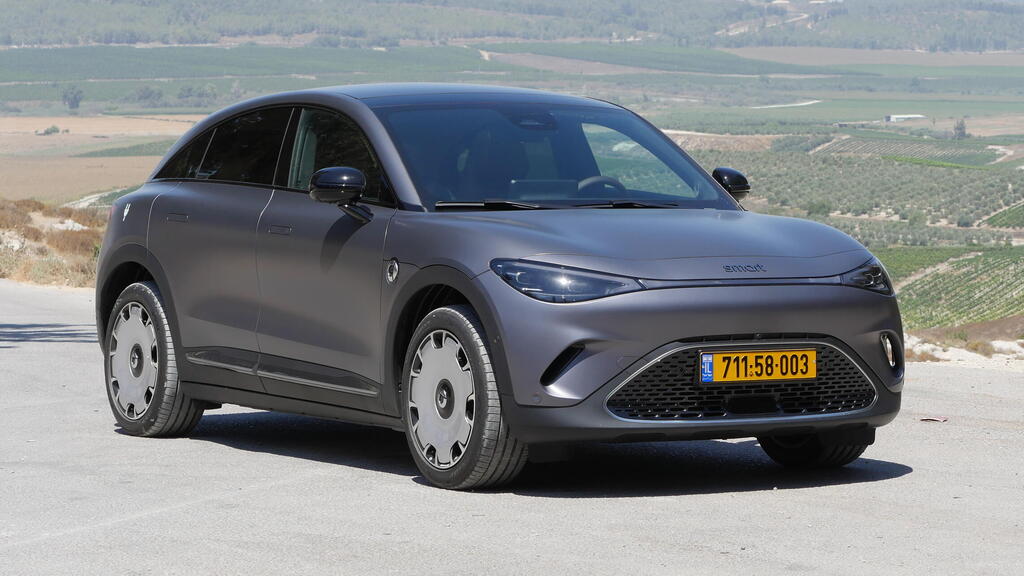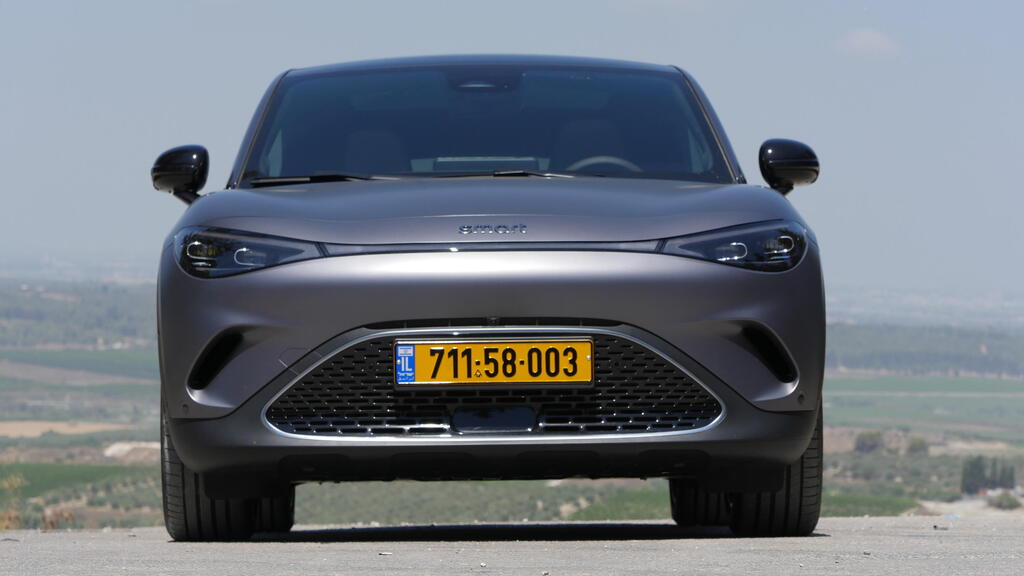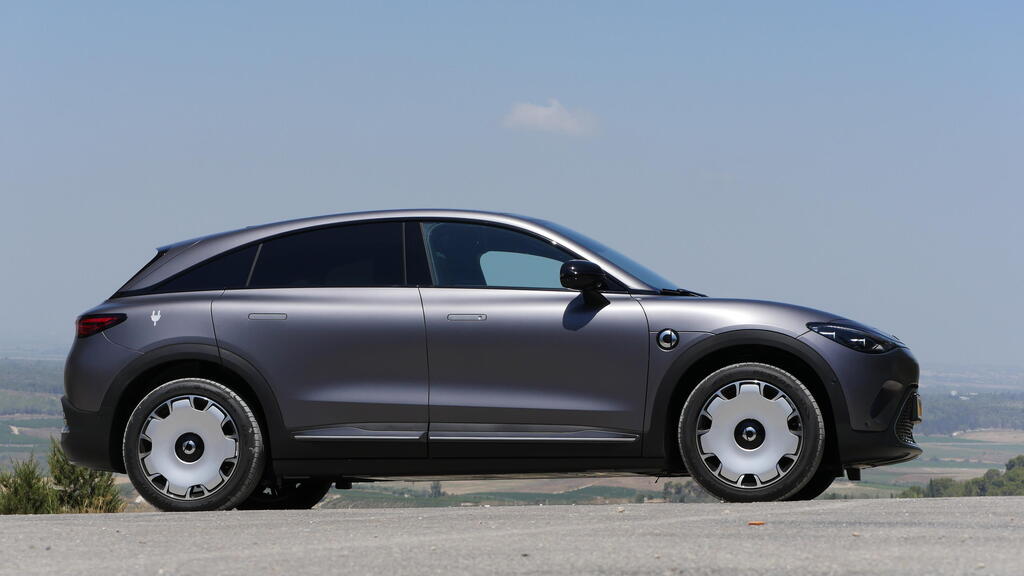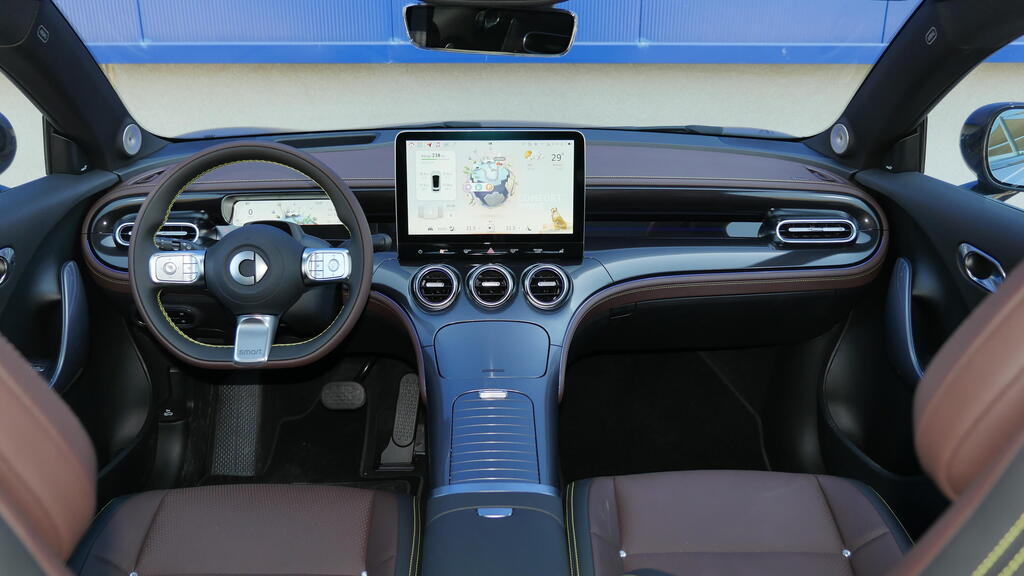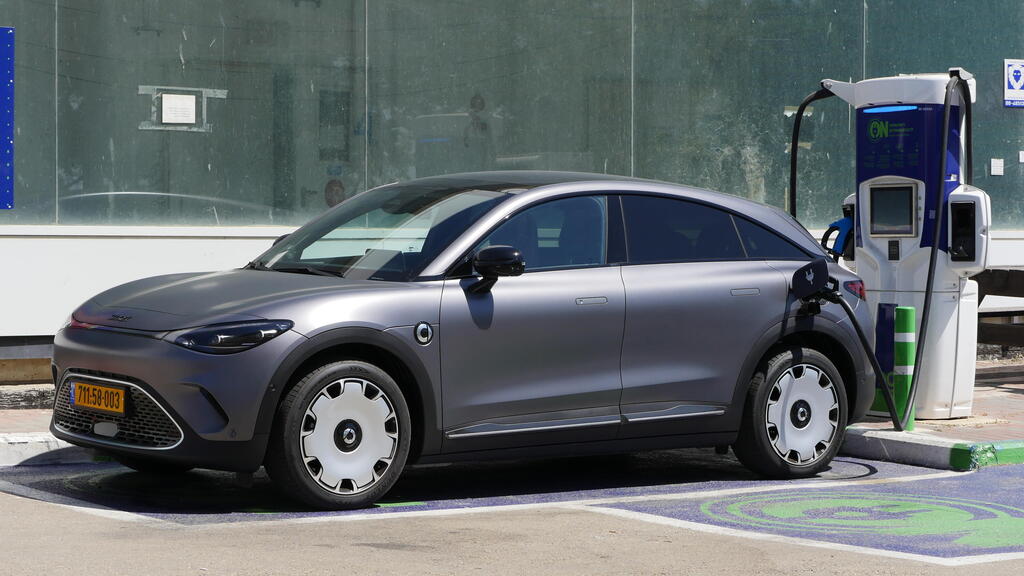Over six months have passed since the Smart 1 electric SUV arrived in Israel, and now it has a bigger sibling, the Smart 3. While it is based on the same platform as the Smart 1 and shares many of its components, the new model is larger, more stylish and more expensive.
Smart quickly established itself in the Israeli market as one of the leading electric vehicles coming from China, with a brand image primarily associated with the luxury of Mercedes and components from its parent company, Geely. It features a modern platform and an excellent power unit. The Smart 3 is attractive, practical and enjoyable to drive, and benefits from fast charging.
Not everything is perfect, however. The Smart 3 model finds itself in a pinch when it comes to pricing. It’s more expensive than the impressive Xpeng G6 and Tesla Model Y, and steers close to the Hyundai Ioniq 5 and Volkswagen ID.5.
Urban ride comfort is unimpressive, the interior material quality is only average, the practical driving range in the hot summer shortens significantly, and the lack of a sunroof cover is a severe flaw in the Israeli summer.
Moreover, the price – especially for the test car (NIS 225,000) – isn’t on the attractive side either. Yet it’s worth remembering that Smart is still a unique brand with an appealing look and is weighed not only in its performance but in its looks as well.
Sleek and modern
The model’s exterior is round and attractive, similar to its smaller sibling, but the lower roof (by 8 cm) and the longer body (by 13 cm) give the 3 a less boxy, more dynamic appearance. It adopts familiar electric vehicle lines, with a closed front grille and modest air intakes at the front bumper edges, retractable door handles, and aerodynamic wheels that don’t look as good. The drag coefficient is 0.27 – which isn’t impressive in the electric vehicle era but better than the previous model’s 0.29.
The driver's environment is modern and unpretentious, with few switches and a physical separation between the driver and passenger, housing useful storage compartments. Ambient lighting is impressive, and the seat upholstery is attractive, but the plastic quality isn’t as impressive.
The display includes a large touchscreen (12.8 inches) controlling most vehicle systems, with high resolution and generally easy operation. It also has excellent Android and Apple connectivity, including displaying navigation instructions on the excellent head-up display. The digital instrument panel (9.2 inches) is narrow but presents information clearly.
As usual, we would have liked to see some physical buttons in the mix, for example, for volume control, mirror adjustment or climate control, which are done via the touchscreen. We would also have preferred a fabric cover for the large sunroof, which is absent. Such a cover exists in the smaller and cheaper Smart 1 model.
The seating position is less high than in the 1 and wasn’t comfortable for all drivers, mainly due to a somewhat short seat base. The wheelbase is longer here than in the 1 by 3.5 cm (278.5 cm), and the rear legroom is excellent, but the lower roof makes it difficult to secure toddlers in the seats, which are less comfortable for adults on long trips.
The additional 2 cm in width (184 cm) is less noticeable, as the middle seat remains small and stiff. On the positive side, the flat floor, air vents, and dedicated charging sockets for the rear passengers are a welcome change.
Unlike its smaller sibling, the model’s rear seat doesn’t slide, making the trunk volume fixed at 370 liters. This is reasonable on paper and impressive and very accessible in practice.
Well-equipped
The model’s equipment list includes faux-leather seats with heating and electric adjustment in the front, surround cameras and parking sensors, and an electric trunk door. The "Premium" version we drove upgrades the upholstery to genuine leather and adds matrix LED lighting, a head-up display, wireless phone charging and an upgraded (and excellent) Beats sound system with 13 speakers.
The safety features include autonomous braking, lane keeping, adaptive cruise control, blind-spot warning, door-opening alerts and a driver alertness monitoring system that works excellently and responds immediately to a diverted gaze without tripping false alarms.
The adaptive cruise control is tuned to the latest European regulations and adjusts the driving speed according to road signs without needing driver confirmation. This function proved dangerous when the vehicle braked and slowed to 70 km/h on a highway, where temporary signage was placed due to roadwork. The function can be disabled, but it requires navigating through menus on every single drive.
Comfortable driving, with missing features
A rear electric motor (272 hp) propels the Smart 3 from 0 to 100 km/h in 5.8 seconds – almost a second faster than its smaller sibling. In practice, the acceleration feels great thanks to the efficient power delivery of the rear-wheel drive and the immediate pedal response.
Three driving modes are available alongside three different levels of regeneration, but control is done via the touchscreen and not necessarily via the same menus. This solution isn’t good not efficient. The most powerful mode allows for "one-pedal driving," but even the lowest level creates significant deceleration and doesn’t allow for smooth driving.
A 66 kWh battery promises a range of 455 km in the tested version, an increase of 15 km compared to the Smart 1, thanks to a lower drag coefficient. We achieved only 370 km during a day that was hotter than average. The Smart 3 supports AC charging at a 22 kW rate, allowing efficient use of slower public charging stations, reaching a full charge in just 3 hours.
Fast charging (150 kW) promises "less than half an hour" to charge from 10% to 80%. This took a few minutes longer during the test, which can be explained by the challenging weather conditions.
Stiff suspension, along with 19-inch wheels and low-profile tires (245/45), results in a firm ride on city streets. The driving quality improves significantly on highways, however, and the noise isolation is excellent as well.
This same stiff setup is also responsible for excellent road handling with moderate body roll. The steering is sharp and quick, with immediate responses to rapid direction changes. This is a pleasant surprise not expected to find in the Chinese iteration of a brand that originated in Europe.


